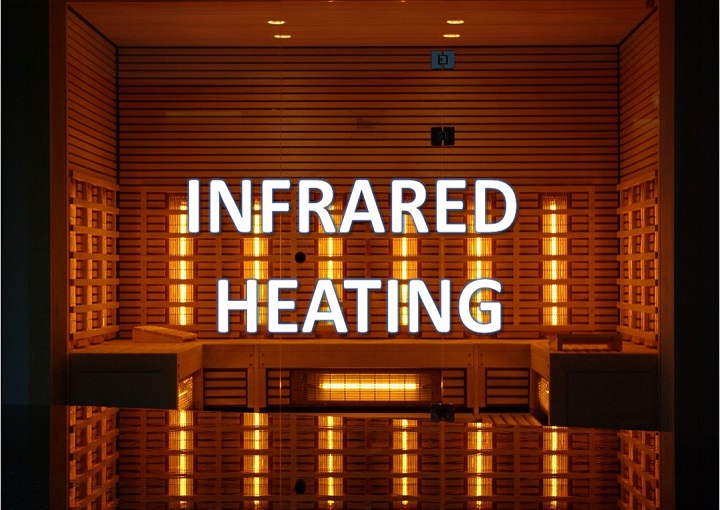Looking for a comprehensive guide on infrared heating? Look no further! Our guide covers everything from how infrared heating works to its benefits and applications in various industries. Whether you’re a homeowner or a business owner, our guide will provide you with the knowledge you need to make informed decisions about infrared heating.
Infrared heating is a highly efficient and cost-effective method of heating homes, offices, and industrial spaces. This type of heating uses infrared radiation to generate heat, making it more energy-efficient than other heating methods. In this article, we will discuss everything you need to know about infrared heating, including its benefits, how it works, and its applications.
1. What is Infrared Heating?
Infrared heating is a type of radiant heating that uses electromagnetic waves to transfer heat from a source to an object. The waves are not visible to the naked eye but can be felt as warmth. Infrared heating is more energy-efficient than conventional heating methods, as it does not heat the air directly. Instead, it heats the objects in the room, which then radiate heat back into the air.
2. How Does Infrared Heating Work?
Infrared heaters work by emitting infrared radiation, which is absorbed by objects in the room, including walls, floors, and furniture. These objects then release the heat back into the air, providing warmth. Infrared heaters do not heat the air directly, which means there is no heat loss through ventilation or drafts. This makes them more energy-efficient than other heating methods.
3. Benefits of Infrared Heating
Energy Efficiency
Infrared heating is more energy-efficient than traditional heating methods, as it does not rely on heating the air directly. This means that there is no heat loss through ventilation or drafts, resulting in less energy waste and lower energy bills.
Cost-Effective
Infrared heaters are cost-effective to install and operate. They require less maintenance than traditional heating systems, and their energy-efficient operation leads to lower energy bills.
Improved Comfort
Infrared heating provides a comfortable and consistent level of warmth. Unlike traditional heating methods, which can result in uneven heat distribution and hot and cold spots, infrared heating warms the objects in the room, resulting in more consistent and comfortable heat.
Reduced Airborne Contaminants
Infrared heating does not rely on forced air to distribute heat, which means that there is no circulation of airborne contaminants. This makes it an ideal heating solution for people with allergies or respiratory issues.
Easy Maintenance
Infrared heating systems require minimal maintenance. They do not have moving parts or filters that need to be replaced, which means that there are no ongoing maintenance costs.
Versatility
Infrared heaters are versatile and can be used for a wide range of applications, including residential heating, industrial heating, and outdoor heating.
4. Types of Infrared Heating Systems
There are four main types of infrared heating systems: ceramic infrared heaters, quartz infrared heaters, metal sheathed infrared heaters, and gas-fired infrared heaters.
Ceramic Infrared Heaters
Ceramic infrared heaters are made of ceramic material and are designed to emit medium to long-wave infrared radiation. They are ideal for small spaces and can be used for both indoor and outdoor applications. They have a longer lifespan and are more durable than other types of infrared heaters.
Quartz Infrared Heaters
Quartz infrared heaters use quartz tubes to emit infrared radiation. They are highly efficient and provide instant heat, making them ideal for outdoor heating applications. However, they are less durable than ceramic heaters and require more maintenance.
Metal Sheathed Infrared Heaters
Metal sheathed infrared heaters use a metal tube to house the heating element and emit infrared radiation. They are highly efficient and can be used for indoor and outdoor heating applications. They are also more durable than quartz heaters.
Gas-Fired Infrared Heaters
Gas-fired infrared heaters use natural gas or propane to generate heat. They are highly efficient and provide instant heat, making them ideal for outdoor heating applications. They are also durable and require minimal maintenance.
5. Applications of Infrared Heating
Infrared heating can be used for a wide range of applications, including residential heating, industrial heating, and outdoor heating.
Residential Heating
Infrared heating is an ideal heating solution for residential spaces, as it provides a consistent level of warmth and is more energy-efficient than other heating methods. It can be used as the primary source of heating or as a supplemental heating system.
Industrial Heating
Infrared heating is commonly used in industrial settings, such as warehouses, factories, and workshops. It can be used to heat specific areas or objects, resulting in more efficient and cost-effective heating.
Outdoor Heating
Infrared heating can be used for outdoor heating applications, such as patios, decks, and outdoor dining areas. It provides instant heat and is more energy-efficient than other outdoor heating methods.
6. Installation and Maintenance of Infrared Heating Systems
Infrared heating systems are easy to install and require minimal maintenance. They do not have moving parts or filters that need to be replaced, which means that there are no ongoing maintenance costs. However, it is important to have the system installed by a qualified professional to ensure proper installation and safe operation.
7. Safety Considerations for Infrared Heating
While infrared heating is generally safe, there are some safety considerations to keep in mind. It is important to keep flammable materials away from the heating element and to ensure that the system is installed in a well-ventilated area. It is also important to follow the manufacturer’s instructions for installation and operation to ensure safe and efficient operation.
8. Conclusion
Infrared heating is a highly efficient and cost-effective method of heating homes, offices, and industrial spaces. It provides a comfortable and consistent level of warmth and is more energy-efficient than other heating methods. There are several types of infrared heating systems available, each with their own advantages and disadvantages. Infrared heating can be used for a wide range of applications, including residential heating, industrial heating, and outdoor heating. Proper installation and maintenance are important for safe and efficient operation.
9. FAQs
1. Is infrared heating more energy-efficient than traditional heating methods?
Ans. Yes, infrared heating is more energy-efficient than traditional heating methods, as it does not rely on heating the air directly, resulting in less energy waste and lower energy bills.
2. What are the different types of infrared heating systems?
Ans. The four main types of infrared heating systems are ceramic infrared heaters, quartz infrared heaters, metal sheathed infrared heaters, and gas-fired infrared heaters.
3. Can infrared heating be used for outdoor heating applications?
Ans. Yes, infrared heating can be used for outdoor heating applications, such as patios, decks, and outdoor dining areas.
4. Does infrared heating emit harmful radiation?
Ans. No, infrared heating does not emit harmful radiation. Infrared radiation is a natural form of energy that is present in sunlight and is completely safe for humans.
5. What is the lifespan of an infrared heating system?
Ans. The lifespan of an infrared heating system can vary depending on the type of system and the level of use. However, infrared heating systems are generally more durable and longer-lasting than traditional heating systems.
6. how much temperature can we achieve through Infrared Heating
In general, infrared heaters can achieve temperatures of up to 1500°C (2732°F) or higher, although the actual temperature will vary depending on the specific circumstances. It is important to note that achieving such high temperatures can pose safety risks and requires careful handling and control of the heating process.
7. can we use Infrared Heaters for heating metals
Ans. Yes, it is possible to use infrared heaters for heating metals. Infrared heaters emit infrared radiation, which can be absorbed by metals and cause them to heat up. The effectiveness of using infrared heaters for heating metals depends on the specific properties of the metal being heated and the design of the heating system. However, infrared heating can be a useful method for heating metals in certain applications. It is important to note that proper safety precautions should be taken when using any heating method, including infrared heaters, to prevent accidents or injuries.

